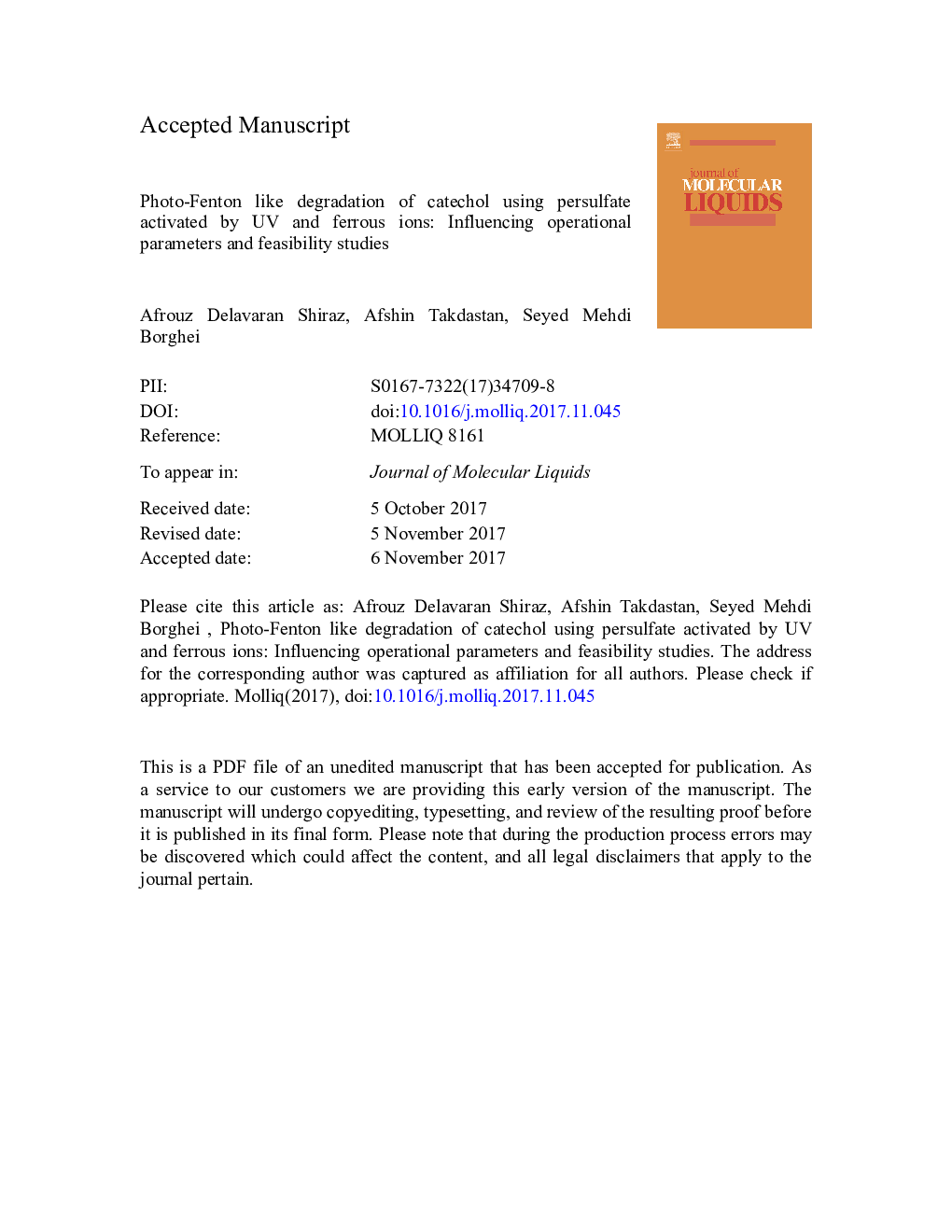| Article ID | Journal | Published Year | Pages | File Type |
|---|---|---|---|---|
| 7843626 | Journal of Molecular Liquids | 2018 | 27 Pages |
Abstract
In the present study, photo-Fenton degradation of catechol from aqueous solution was carried out using UV light and iron ions (Fe2+) as activators of persulfate (PS). Catechol degradation from solution was studied under different experimental variables such as solution pH (2.0-10.0), iron dosages (0.1-0.5Â g/L), persulfate loadings (1.0-5.0Â mM), initial catechol concentrations (20-100Â mg/L) and scavengers (TBA and IPA). The comparative study of catechol removal showed that among the applied approaches, the order of degradation of catechol is as follows: PS/Fe2Â +/UVÂ >Â PS/Fe2Â +Â >Â UV/PSÂ >Â PSÂ >Â UV. Furthermore, higher catechol degradation was observed with increasing iron dosage and PS concentration. While, an indirect relationship was obtained between some experimental variables (e.g., solution pH and initial catechol concentrations) and degradation rate of catechol. 62.5% mineralization degree was obtained at the optimum conditions. In terms of catechol removal and mineralization degree, higher efficiency was achieved in the order of H2O2/PS/Fe2Â +/UVÂ >Â PS/Fe2Â +/UVÂ >Â H2O2/PS/Fe2Â +/UV. A noticeable synergistic effect was observed when Fe2Â + ions and UV light were applied simultaneously for activation of PS. The quenching tests indicated that both OH and SO4â radicals contributed significantly during degradation of pollutant and the sulfate radicals were also the dominant species. The findings of kinetic studies revealed that data of catechol degradation had high correlation with pseudo-first-order model. Finally, it can be concluded that PS/Fe2Â +/UV is an applicable process for removal of high amount of catechol from aqueous solutions.
Related Topics
Physical Sciences and Engineering
Chemistry
Physical and Theoretical Chemistry
Authors
Afrouz Delavaran Shiraz, Afshin Takdastan, Seyed Mehdi Borghei,
